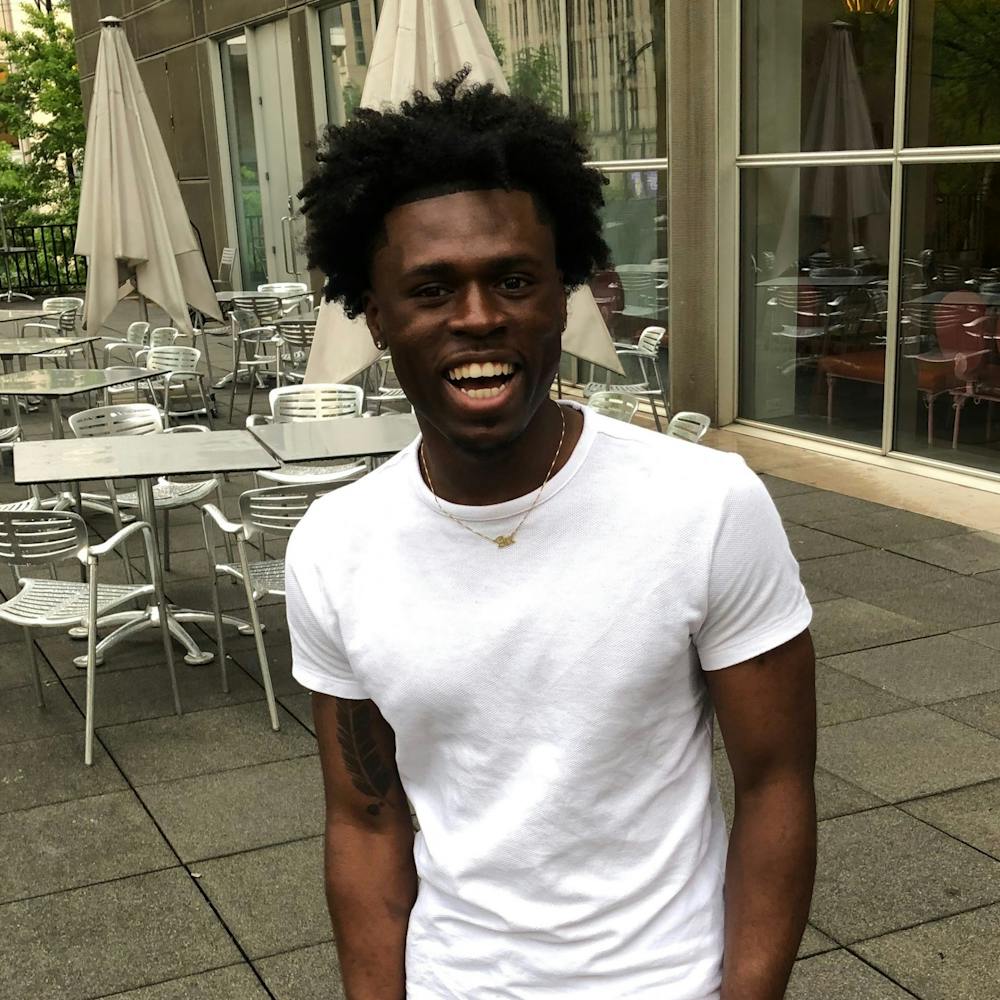
Editor’s Note: The Daily News publishes Letters to the Editor and guest columns with minimal copy edits and provides a headline only if the author does not provide one. The views expressed in letters do not necessarily reflect those of the newspaper. We reserve the right to withhold submitted letters depending on the content.
During fall 2019, I was enrolled in Sociology 221: Introduction to Race and Ethnic Relations, taught by my professor and mentor, Mr. John Anderson. At the beginning of the course, we viewed the film “Agents of Change.” The film looked at pivotal moments in the United States, showing racial complications and conditions on 1960s-era college campuses across America, focusing on two influential movements: San Francisco State in 1968 and Cornell University in 1969. This assignment provided me a “Sankofa” moment.
Sankofa is a term from the Akan language of Ghana — translated, it means “go back and get it.” It is associated with an African proverb that says, “It is not wrong to go back for that which you have forgotten.”
After watching the film, my interest was fueled to research and explore how this movement played out on my own campus here at Ball State. So, I began meeting with Mr. Anderson on a weekly basis to study the past, present and future of the Black Ball State experience on campus, especially utilizing the library’s archives to grasp a holistic understanding of these times.
I found the story of African American students at Ball State is one of perseverance. It is a story of the Black students’ tenacity and faith in themselves, each other and the university. My experience has provided me with a foundation to tell the story of the students who have come before me to bridge the gap of understanding of present-day campus life and Black experiences to the Black student protest movement of the late 1960s.
For decades of America’s history, a majority of the Black population was prohibited from engaging in the learning process of reading and writing. Recognizing education’s significance and its power for transforming lives and communities, many Blacks discretely learned how to read and write even with barriers posed by the law. Today, Black Americans are enrolling in higher education in record numbers, but students are still challenged by the historical residue of discrimination and hurdles associated with financial and other factors.
Student activism is regarded as the active participation of students as key instruments in their welfare, and students are important agents of change in the fight for academic equity and inclusion. Movements like the one that happened more than 50 years ago on Ball State’s campus were among the most significant in Ball State’s history. Though Black students attending Ball State in the mid-to-late 1960s did not need police to escort them to their classes, like students attending the University of Alabama, many felt unwelcome and unwanted.
During the 1967-68 school year, action against racial prejudice emerged in activities all across Ball State’s campus. The three primary concerns that most directly influenced Black student activism during this time were the university’s lack of social activities for Black students, off-campus housing discrimination and the need for more Black faculty. Black students on campus also demanded Black studies courses in the college curriculum.

Kennedi Barnett, DN
Here’s what was going on:
Relative to the lack of social programs, though Black students paid tuition, they were still largely excluded from programming on campus. Dances held at the student center and the musical guests who were welcomed to campus in the 1960s were not appealing to diverse audiences. Black students wanted their own social activities and programming that better fit their interests.
No student, Black or white, should go through four years of college and never have a Black professor. Yet, in the 1967 Special Directory Issue of The Ball State Daily News, designed to introduce the faculty to campus, students saw only one Black faculty member, Mr. Charles Greenwood.
Students could pay tuition to Ball State in the early 1960s, but those living off campus were oftentimes five or six miles away from campus. Most students did not have cars, so the bus system or walking were their only choices for getting to campus.
Black students began to organize to address their concerns. On February 2, 1968, some 50 Black students walked out during a ceremony commemorating retiring President John Emens. This event addressed the dissatisfaction with the way that the administration had dealt with or neglected to address racial problems on campus.
Months later, student organizers arranged another protest in response to the assassination of Rev. Martin Luther King, Jr. To fulfill MLK’s dream of a “Poor People’s March,” Ball State student organizers planned a demonstration for the equality of people in Muncie and students at Ball State. Black and white students marched to the administration building to demand equality in off-campus housing, Greek life and courses.
In response to the walkout and march, President Emens formed the Civil Rights Commission, a group of university personnel charged with researching racism at Ball State. Based on the Commission's findings, an “Office of Special Programs” was created.
In 1969, Dr. Robert Foster was hired as the director of special programs to help minority students deal with issues of loneliness and alienation in addition to discovering meaningful ways to work successfully with minority and educationally disadvantaged undergraduate students. The Office of Special Programs not only addressed the needs of Black students, it was also a place for other minority students and their concerns. Dr. Foster was instrumental in the establishment of the Office of Multicultural Affairs, now the Multicultural Center.
The Black Protest Movement at Ball State University introduced tangible changes in university policy and campus attitudes through organization, protest and writing. Students worked together to challenge the idea that opportunity at Ball State did not equate to equity and equality, and the work continues today. The story of Black students at Ball State is one of perseverance — it is a story of the Black students’ tenacity and faith in themselves, each other and the university.
- Aric D. Fulton, Ball State student in Educational Administration & Supervision





